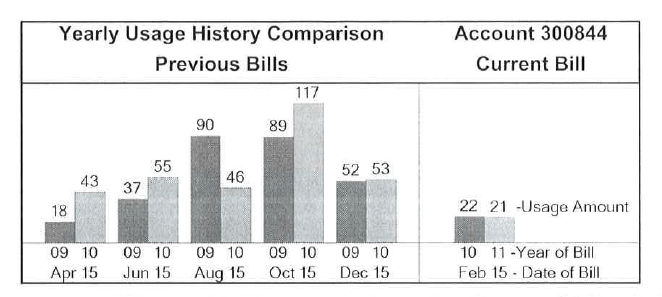March 20-26th Is Fix-A-Leak Week
MARCH 20-26TH IS FIX-A-LEAK WEEK
That annoying faucet drip at your bathroom sink – did you know if you let it go long enough, it can cost you more than 3,000 gallons of water per year? That’s enough water to take more than 180 showers! These kind of small leaks – let alone larger ones – use up over 1 trillion gallons of water a year in U.S. homes.
Every March utilities nationwide promote Fix-a-Leak Week to help us all remember to hunt down and catch those drips.
Doing regular home water audits can help you make sure you’re using water as efficiently as possible. In addition to saving this important resource, it might even save you some extra money on your water bill.
Northshore Utility District has a full page on finding and fixing common home leaks. [We even made a video!] Below are some top tips.
TOP WAYS TO WATCH OUT FOR LEAKS:

1. CHECK YOUR WATER BILL. Is it a lot higher than normal, or than previous months? This could be a sign of a leak. Your bimonthly bill includes a handy comparison graph to help you track changes.
2. PAY ATTENTION TO “POTENTIAL LEAK NOTICES. Our “smart” water meters are equipped with a sensor that registers continuous usage. When we read your bill every two months, if your meter triggered this alarm, we send you a notice.

Sometimes the leaks are small and don’t change your bill much. But keep in mind: small leaks eventually become large, expensive problems – especially on your outside water line – and it’s wise to investigate right away. Further, our leak adjustment policy only allows a certain amount of time to make repairs and request a credit on your bill of some of the excess water use caused by the leak.
3. CHECK YOUR WATER METER – for “real time” information. It’s typically located at the edge of your property line in a concrete or plastic box. Use a screwdriver to lift the metal lid. You may need to dig away some dirt (used for insulation) to find the meter. Lift the black cap covering the meter face to see the water-use register.
You can check for leaks using your meter in two ways. Make sure no water is being used inside or outside your home first.

4. TEST YOUR TOILET – the most common indoor home leak. Drop a few drops of food coloring into the tank and let it sit for 15–30 minutes – or overnight, if possible. If the color seeps into the bowl, you have a leak. Flush toilet afterward to avoid staining.
Toilet leaks can waste 200 gallons or more per day! A loose flapper is a common cause – here’s a video showing you how to replace your old flapper.
If you are ready to replace your toilet, you may benefit from this rebate for high-efficiency toilets that use fewer gallons per flush.
MORE WAYS TO USE WATER WISELY
As a NUD customer, you have access to free water-saving resources!
- Faucet aerators and low-flow shower heads – two per household allowed. Stop by our office to pick some up.
- FREE gardening classes to help make your landscape as water-efficient as possible – held right here at NUD! Classes are taught by local landscape and garden pros – some of whom even teach at the NW Flower and Garden show. Check out our class roster and register for a class at www.nud.net/gardening. See more local classes at www.savingwater.org.